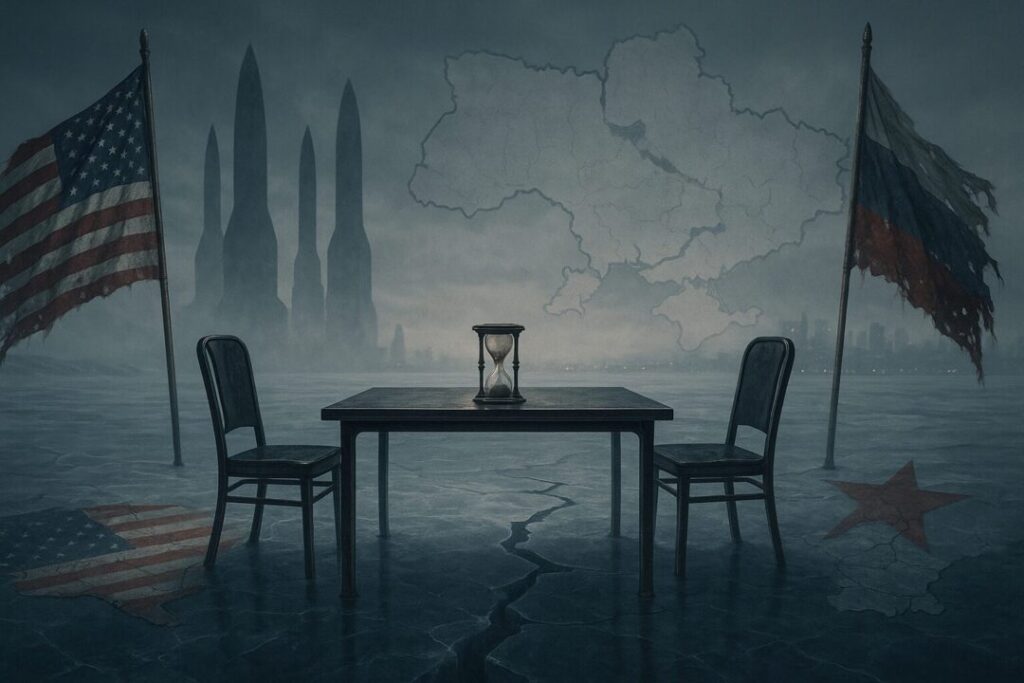When President Donald Trump met with Vladimir Putin in Alaska on August 15, expectations were high.
Trump hoped for progress toward a peace deal. A ceasefire didn’t come out of the meeting, but both sides spoke of wanting to move the conflict toward resolution.
Trump’s approach drew criticism from the left, especially after he mentioned “land swaps” in a Fox interview. Supporters, however, saw it not as appeasement, but as a pragmatic attempt to open the door to negotiations.
The Road to Today
To understand the present, it helps to look back to 1994.
That year, Ukraine agreed to give up the world’s third-largest stockpile of nuclear weapons under the Budapest Memorandum.
In return, the U.S., U.K., and Russia pledged to respect Ukraine’s borders and independence.
But the memorandum provided “assurances” rather than legally binding guarantees.
When Russia annexed Crimea in 2014, the United States under President Obama condemned the move – but responded only with limited sanctions and non-lethal aid, such as blankets and food rations.
Without strong U.S. leadership, Britain and other allies also held back. That inaction convinced Moscow that the West might not back up its promises.
The Role of Nuclear Weapons
Ukraine’s decision to give up its arsenal is now seen by many as a turning point.
Nuclear arms are more than weapons; they’re deterrents. Countries like North Korea and Iran pursue them because they know possession alone changes how others treat them.
Nevadans understand this power better than most. Our state hosted decades of nuclear testing at the Nevada Test Site, a reminder that these weapons carry enormous weight in global politics.
Without them, Ukraine had to rely on outside assurances; assurances that proved insufficient when tested.
Where Things Stand
Today, Ukraine continues to fight with significant Western backing, but experts point out limits on what is possible.
Ukraine is unlikely to join NATO any time soon, though it will likely continue receiving weapons and training.
For now, the likeliest outcome seems to be a hardened stalemate: Ukraine defending most of its sovereignty with Western arms, Russia holding pieces of land it seized, and the human toll climbing higher every month.
Russia, for its part, has absorbed heavy losses. Estimates suggest that roughly one million Russians have been killed, wounded, or captured since the war began.
Still, Moscow shows no sign of conceding. Meanwhile, Europe pledges long-term support, but public opinion and energy costs make it uncertain how strong that commitment will remain over time.
Talking with Adversaries
Speaking directly with Putin should not automatically be seen as weakness. History shows U.S. leaders have often dealt with dangerous adversaries when it served the national interest.
Franklin Roosevelt worked with Stalin during World War II. Richard Nixon traveled to China to meet Mao Zedong. Both decisions were controversial, but both reshaped world affairs.
Trump’s willingness to meet face-to-face with Putin is in line with actions of those before him. Critics argue it risks rewarding aggression, but supporters say dialogue could be the only path to limiting further bloodshed.
What’s at Stake
The human toll of the war is staggering.
Estimates place Ukrainian and Russian dead, wounded, or missing at close to 1.4 million people.
That scale of suffering rivals some of the bloodiest battles of the 20th century.
Western nations insist they want to help Ukraine “as long as it takes,” – but what does victory actually mean, and who is prepared to pay the enormous cost required to achieve it?
If the goal is restoring Ukraine’s 1991 borders, that would require a level of U.S. and European involvement that risks direct confrontation with a nuclear-armed Russia. Few leaders seem ready to go that far.
Ukraine’s Lesson for America’s Future
The war between Ukraine and Russia highlights hard lessons. Weak responses in 2014 set the stage for today’s conflict.
Agreements without enforcement are just empty promises – and leadership on the world stage matters just as much as it does at home.
Whether Trump can move the conflict toward peace remains to be seen. Any settlement will require recognizing realities on the ground, as well as the costs of continuing the war.
The opinions expressed by contributors are their own and do not necessarily represent the views of Nevada News & Views. This article was written with the assistance of AI. Please verify information and consult additional sources as needed.




